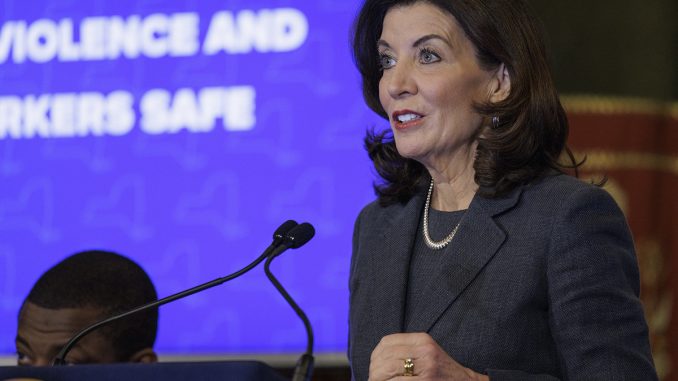
Among other initiatives aimed at schools and education, Governor Kathy Hochul announced a plan to provide free school meals to all New York students regardless of income.
“The research is clear: Good food in the lunchroom creates good grades in the classroom,” Gov. Hochul said in a press release. “I’m proposing free school meals for every student in New York — giving kids the sustenance they need and putting more money back in parents’ pockets.”
According to data from the School Nutrition Association, the average price for a school prepared lunch in the U.S. is $2.96. The average cost of a breakfast is $1.77. This means the monthly cost for a family with two school age children to eat both meals at school is around $180.
Under the current system, federal funds cover the cost of meals for students whose families make less than $3,380 a month for a family of four. In districts where the population of students receiving free or reduced meals exceeds 25% or more, all students receive free meals through the Community Eligibility Provision, or CEP. With the latest budget proposal, the governor hopes to fund free food programs for the state’s remaining districts. Southold, Greenport and Riverhead school districts are among those whose nutrition programs are funded by the CEP.
Programs like CEP eliminate onerous paper applications and the need to track cafeteria debt. The USDA website states that the CEP “eliminates unpaid meal charges, minimizes stigma, reduces paperwork for school nutrition staff and families, and streamlines meal service operations.”
“When I started in this district 11 years ago, we had roughly $80,000 in unpaid cafeteria debt. We were able to eliminate any students accruing any debt, because the CEP program provides a breakfast and lunch to every child every day at no charge. So there is no way to accrue debt,” said Keith Graham, food services manager at Riverhead school district. “Students are able to purchase a la carte items. They’re able to purchase snack items and second meals, if they wish. But that first breakfast and that first lunch are at no charge.”
Schools typically provide a number of services free of charge to all students, whether or not they make use of them, including transportation and the school nurse. “There’s no reason that every student in New York State shouldn’t have [free school meals]. Students don’t get charged for the bus. They’re not asked, ‘Hey, your household makes this much money, so you’re going to pay for gas money for the bus,’” Mr. Graham said. “Your zip code shouldn’t dictate if you get a nutritious meal or not.”
No Kid Hungry reports that, on average, students who eat school breakfast have been shown to achieve 17.5% higher scores on standardized math tests and attend 1.5 more days of school per year. The Food Research and Action Center states that districts who have implemented the CEP program have lower rates of out-of-school suspensions. They also show that students who participate in school breakfast programs have improved attendance, behavior, and academic outcomes, as well as a reduction in tardiness.
Mr. Graham has seen the benefits of universal free meals firsthand. “These programs, they get rid of stigma, they make things easier on a household. They make things a heck of a lot easier on a student,” he said. “I think it’s something that should have been done a long time ago that needs to be done now.”

